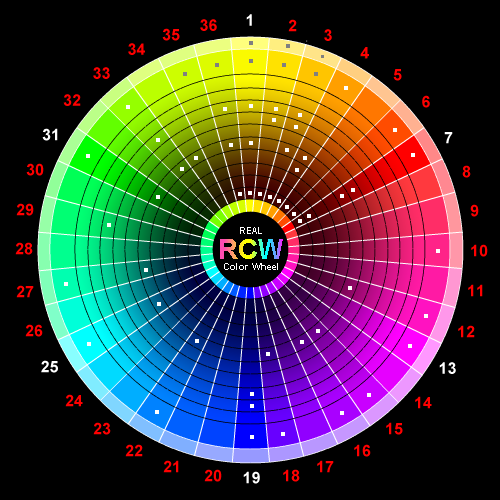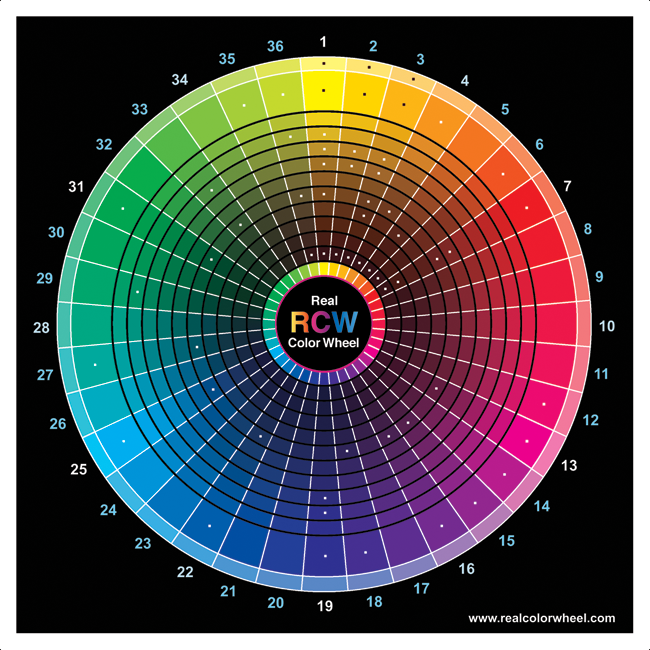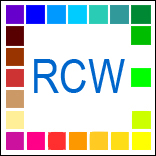The web page.. http://www.realcolorwheel.com/colorwheel.htmA True Transparent Test, the under-tone of any tested pigment will not show lighter on a black paper.Translucent pigments are semi-transparent or semi-opaque, weak opaque colors. Both strong and weak opaque colors will lighten a black paper, so they are not transparent.
Aureolin, PY40, Potassium Cobaltinitrite, is not transparent as has always been claimed, it's a translucent, a weak opaque. Chemicals can make a transparent dark brown pigment, oxides can make translucent and opaque pigments.
Here are the transparent yellow chemical pigments. Indian Yellow can be made with these Chemical Class colors;
Dioxine Yellow Nickel Complex which makes Nickel Dioxine Yellow PY153 and PG10.
Disazo, which makes Dairylide Yellow HR70.
Anthraquinone, which makes Anthrapyrimidine Yellow.
Tetrachloroindolinone, which makes Isoindolinone Yellow R, the brown/side Indian Yellow.
Using Primary Transparent Yellow.Indian Yellow is a set of two colors, transparent yellow-orange to yellow and yellow ocher hue to yellow. One is a strong bright yellow as a tint and is used to mix with magenta making orange to crimson rose, including bright red, the other is for darker yellow browns and greens before adding burnt umber. These two transparent duel-toned colors mix into a lot of greens.
* Daniel Smith, Indian Yellow (hue), Anthrapyrimidine Yellow, Vat Yellow 20, PY108. 68420. duel-toned from yellow hue to yellow.
* Lefranc and Bourgeois, Indian Yellow (Imitation), PY153 Nickel Dioxine Yellow Complex, is a translucent duel-toned yellow-orange mass-tone to cadmium yellow hue under-tone and top-tone. Makes great reds and warm yellows.
* Grumbacher Indian Yellow Hue, PY1 Arylide Yellow G / PO1 Hansa Orange, translucent, less dual-toned then Nickel Dioxine Yellow.
* Talens, Indian Yellow, PY110 Isoindolinone, from yellow-orange-ocher to yellow. Makes clean reds and warm yellows.
* Talens, Gamboge, PY97 Arylide Yellow Fgl, Duel-toned orange-ocher to yellow.
* Schmincke, Chrome Yellow Deep (misnamed, not lead chrome), PY83 Diarylide Hr70, from yellow pale to yellow deep duel-tone. Makes clean reds and warm yellows.
* Sennelier, Yellow Lake, PY83 Diarylide Hr70 / PY43 Yellow Ocher Iron Oxide. These are the same pigments as in Old Holland's Indian Yellow Brown Side. Duel-toned translucent.
* Schmincke, Permanent Yellow Deep, (Indian Yellow hue), Pr154 Benzimidazolone Yellow H3g / PY10 Isoindolinone Yellow R. Makes clean reds and yellow-orange yellows.
* Sennelier, Yellow Lake, PY83 Diarylide Hr70 / PY43 Yellow Ocher, is not transparent so it is not really a Lake (transparent) color. It's translucent because of the addition of Yellow Ocher Oxide.
*Old Holland, Indian Yellow Org/side and Brn/side, nickle and iron, PY153, PY108, PG10F
Daniel Smith Water Colors matching the Real Color Wheel.
Any manufacture can plot an exact color match in any media on this available 32x32, 360 degree CMYK printed realcolorwheel for artists.
Use a spectrograph read of the RCW print, find matching numbers of your choosen color chip. Or, use the RGB table numbers of the RCW
http://www.realcolorwheel.com/rcwchart.htmto match your photographed color chips RGB numbers.
Real Color Wheel for Artists Grid Description/Example.RCW36Ring#1 is the first 10 degree arc color, yellow.
RCW36Ring#1.00 is a 50% tint of the full chroma color of Arc #1, yellow.
RCW36Ring#1.0 is a main full chroma color of arc #1 yellow.
RCW36Ring#1.10 equals the darkest shade before going black. That's 10 blocks of shades going to the center black.
*To plot left or right on any color block, use the 10 degree lines as separators. The progression starts at warm yellow.
RCW36Ring#1.0.5
.05 is the fifth, degree separated, unseen block of nine full chroma graduated colors. They join the adjacent left and right 10 degree arcs.
Start Pigments on the Real Color WheelRCW36#1.00 Lemon Yellow Chromate
RCW36#1.00 Nickel Titanate Yellow, D.S. Nickel Titanate, PY53, 77788
RCW36#1.00 Hansa Yellow Light, D.S. Arylide Yellow 10g, PY3, 11710
RCW36#1.0.1 Aureolin, Cobalt, D.S. PY40, 77357, translucent, non staining yellow
RCW36#1.0.2 Cadmium Yellow Light, D.S. opaque, PR35, 77205
RCW36#1.0.3 Zinc Yellow, opaque
RCW36#1.0.5 Cadmium Barium Yellow Pale, opaque
RCW36#1.0.6 Indian Yellow, D.S. top-tone tint, Anthrapyrimidine Yellow, transparent, PY108, 68420, duel-toned from ocher mass-tone hue to yellow, Br/s, or Nickel complex PY153
RCW36#1.0.7 Gamboge Lake, top-tone, translucent, synthetic
RCW36#1.3 Gamboge Lake, mass-tone, translucent, synthetic
RCW36#1.3 Nickel Azo, mass-tone, Yellow, translucent, PG10
RCW36#1.6 Indian Yellow, D.S. mass-tone, Anthrapyrimidine Yellow, PY108, 68420, duel-toned from ocher mass-tone hue to yellow, Br/s
RCW36#1.10 Burnt Umber, translucent, D.S. PBr7, 77492
RCW36#2ring00 Naples Yellow Light, opaque
RCW36#2ring0 Hansa Yellow Medium, D.S. translucent, 5gx, PR3, 11710
RCW36#2ring0 Cadmium Yellow Medium, D.S. opaque, PY35, 77205
RCW36#2ring3 French Ocher R/s, D.S. opaque, PY43, 77491
RCW36#2ring4 Yellow Oxide/Ocher Br/s, D.S. opaque, PY43, 77491
RCW36#2ring10 Burnt Umber, translucent, PBr7, 77492
RCW36#3ring-00 Naples Yellow Deep, opaque
RCW36#3ring0 New Gamboge, D.S. mass-tone, Nickel Dioxine Yellow, transparent, PY150, CI# 48545, Vat Yellow 20, similar to PY153, dual-toned from a mass-tone of yellow-orange to a bright yellow tint, makes great reds and greens. Similar to Indian Yellow Original.
RCW36#3ring0 Cadmium Yellow Deep, opaque, D.S. 77202
RCW36#3ring3 Raw Sienna, D.S. translucent, PBr7, 77492
RCW36#3ring4 Goethite, Deep Yellow Ocher R/s hue, D.S. opaque, granular
RCW36#3ring4 Italian Deep Yellow Ocher R/s hue, D.S. opaque
RCW36#3ring6 Quinacridone Deep Gold, D.S. mass-tone, Quinacridone Gold, transparent O/s burnt sienna, PO48, PO49, 73900/73920, mixes with Thalo Green to mix Sap Green.
RCW36#3ring7 Transparent Brown Oxide, D.S. translucent, PR101, CI# 77491
RCW36#3ring10 Burnt Umber, D.S. translucent, PBr7, 77492
RCW36#4.0.1 Permanent Yellow Deep, D.S. transparent orange, Isoindolinone Yellow R, PY110, CI# 56280
RCW36#4.0.3 Permanent Orange, D.S. Benizimidazolone Orange, PO62, 11775, translucent.
RCW36#4.0.5 Cadmium Orange, D.S. PO20, CI# 77202, opaque.
RCW36#4.6 Burnt Sienna D.S. translucent
RCW36#4.10 Burnt Umber, D.S. translucent, PBr7, 77492
RCW36#5ring7 Italian Burnt Sienna, D.S. translucent, PBr7, 77492
RCW36#ring10 Burnt Umber, D.S. translucent, PBr7, 77492
RCW36#6ring0 Organic Vermilion, D.S. Chinese Vermilion, translucent, PR188, Napthol Red AS, 12467
RCW36#6ring10 Burnt Umber, D.S. translucent, PBr7, 77492
RCW36#7.0.1 Cadmium Red Light/Medium, D.S. opaque warm red, PR108, 77202
RCW36#7.0.9 Cadmium Red Scarlet, D.S. opaque, PR108
RCW36#7ring5 Italian Venetian Red, D.S. opaque, PR101, CI# 77491
RCW36#7ring6 Transparent Red Oxide, D.S. translucent, PR101, CI# 77491
RCW36#7ring9 Permanent Brown, D.S. Benizimidazolone Brown, transparent, PBr25, 12510,
RCW36#7ring10 Burnt Umber, D.S. translucent, PBr7, 77492
RCW36#12 ring0 Quinacridone Rose D.S., Rembrandt Rose, Translucent, tint, PV19, 73900
RCW36#13ring0 Quinacridone Magenta, D.S. top-tone, Primary Transparent Warm Magenta is opposite Secondary Pathalo Green B/s. PR122
RCW36#13ring6 Quinacridone Magenta, D.S. mass-tone, Primary Transparent Warm Magenta is opposite Secondary Pathalo Green B/s. PR122
RCW36#14ring0 Cobalt Violet, D.S. Primary Opaque Cool Magenta, opaque top-tone tint mass-tone only. PV49, 77362 or PV14, 77360
RCW36#16ring0 Carbazole Violet, translucent, Dioxazine Purple, top-tone, PV23 (Rs), 5131
RCW36#18ring0, Ultramarine Violet, top-tone, translucent, weak tinting strength PV15, 77007
RCW36#19ring0 French Ultramarine Blue, translucent, PB29, 77007
RCW36#19ring2 Ultramarine Blue Light translucent, PB29, CI# 77007
RCW36#19ring3 Ultramarine Blue Deep translucent, PB29, CI# 77007
RCW36#22ring0 Cobalt Blue, D.S. opaque, PB28, CI# 77346
RCW36#22ring0 Azurite, D.S. transparent, top-tone, PB28, CI# 77346
RCW36#22ring6 Azurite, D.S. transparent, mass-tone, PB28, CI# 77346
RCW36#25ring0, Phthalocyanine Blue, top-tone, transparent, G/s is Cyan and R/s is toward magenta, PB15.3, CI# 74160, Cyan Primary
RCW36#25ring6, Phthalocyanine Blue, mass-tone, transparent.
RCW36#27ring0, PhthaloTurquiose top-tone, Pathalo Blue plus Pathalo Green, D.S. transparent, PB15 / PG36. 74160 / 74265
RCW36#27ring6, PhthaloTurquiose mass-tone, Pathalo Blue plus Pathalo Green, D.S. transparent, PB15 / PG36. 74160 / 74265
RCW36#29ring3, Opaque Green Light
RCW36#31.0.1, Thalo Green (Y/s), Phthalocyanine Green, D.S. top-tone, transparent, PG7, CI# 74260, Secondary Color
RCW36#31.0.9, Thalo Green (B/s), Phthalocyanine Green
RCW36#33.0, Permanent Green Light, D.S. Arylide Yellow 10g, PY3, CI#11710 and Phthalocyanine Green, PG7, 74260
RCW36#33.6, Hooker's Green, D.S. translucent, Phthalocyanine Green, PG36. Arylide Yellow 10g, PY3. Quin. Deep Gold, PO49
RCW36#34ring6, Chromium Green oxide, D.S. opaque, PG17, 77288
RCW36#35ring0, Lime Green, Arylide Yellow PY97 FGL, Phthalocyanine Green, PG7, Y/s top-tone, translucent
RCW36#35ring0, Permanent Green Light, Martin F. Weber, Binney & Smith, Phthalocyanine Green, PG7 and Cadmium Yellow Light, PY35, opaque
RCW36#36ring0, Phthalo Yellow Green, D.S. Arylide Yellow 1og PY3 and Phthalo Green PG36
RCW36#36ring0, Brilliant Yellow Green, mass-tone, translucent and opaque
RCW36#36ring3, Rich Green Gold, D.S. translucent, mass-tone, Nickel Chelated Azo, PG10, CI# 12775, pale yellow G/s under-tone
RCW36#36ring7, Green Gold, D.S. translucent, mass-tone, Azomethine Metal Complex Yellow 5g, PY129, 48042, dual-tone green-brown to yellow, transparent
RCW36#36ring10 Raw Umber, D.S. mass-tone, translucent
__________________________________________________
Percentages of Mixed Pigments, Real Color Wheel Description/Example: Equal amounts of transparent yellow and transparent magenta pigment make a red pigment, that's the same quanty of pigment, 100% of each, twice.
Down the colorwheelYellow pigment to dark brown pigment.
Arc#1
RCW1.0=100%Yellow
RCW1.5=50%Yellow+100%Brown (brown has 33% yellow already)
RCW1.10=100%Brown
Arc#2
RCW2.0=100%Yellow+16%Magenta.
RCW2.5=50%Yellow+8%Magenta+100%Brown
RCW2.9=0%Yellow+0%Magenta+100%Brown
Add ultramarine blue to reach black.
Around the colorwheelPigment Mixing Percentages. Use the same percentages for Magenta to Cyan and Cyan to Yellow.
Transparent Yellow to Transparent Magenta, full chroma.
RCW1.0=100%Yellow
RCW2.0=100%Yellow+16%Magenta.
RCW3.0=100%Yellow+32%Magenta
RCW4.0=100%Yellow+50%Magenta Orange
RCW5.0=100%Yellow+66%Magenta
RCW6.0=100%Yellow+84%Magenta
RCW7.0=100%Yellow+100%Magenta Red
RCW8.0=84%Yellow+100%Magenta
RCW9.0=66%Yellow+100%Magenta
RCW10.0=50%Yellow+100%Magenta Scarlet
RCW11.0=32%Yellow+100%Magenta
RCW12.0=16%Yellow+100%Magenta
RCW13.0=0%Yellow+100%magenta Magenta
Transparent Magenta to Transparent Cyan, full chroma.
RCW13.0=100%Magenta
RCW14.0=100%Magenta+16%Cyan.
RCW15.0=100%Magenta+32%Cyan = Violet
RCW16.0=100%Magenta+50%Cyan = Purple
RCW17.0=100%Magenta+66%Cyan
RCW18.0=100%Magenta+84%Cyan
RCW19.0=100%Magenta+100%Cyan = Ultramarine Blue
RCW20.0=84%Magenta+100%Cyan
RCW21.0=66%Magenta+100%Cyan
RCW22.0=50%Magenta+100%Cyan = Cobalt Blue
RCW23.0=32%Magenta+100%Cyan
RCW24.0=16%Magenta+100%Cyan
RCW25.0=0%Magenta+100%Cyan
Transparent Yellow to Transparent Cyan, full chroma.
RCW1.0=100%Yellow
RCW36.0=100%Yellow+16%Cyan.
RCW35.0=100%Yellow+32%Cyan
RCW34.0=100%Yellow+50%Cyan
RCW33.0=100%Yellow+66%Cyan
RCW32.0=100%Yellow+84%Cyan
RCW31.0=100%Yellow+100%Cyan = Green
RCW30.0=84%Yellow+100%Cyan
RCW29.0=66%Yellow+100%Cyan
RCW28.0=50%Yellow+100%Cyan
RCW27.0=32%Yellow+100%Cyan = Turquiose
RCW26.0=16%Yellow+100%Cyan
RCW25.0=0%Yellow+100%Cyan
Painting opaquely, yellow darkens to gold ocher then to deep brown. All three of these opaque pigments are needed on the artists palette. One transparent yellow will do it if you are also using transparent magenta and cyan to paint full color paintings.
Yellow and orange arcs become dark by adding brown, the same dark brown that matches the red arc.
Magenta will get dark by adding it's opposite color or the other two triads, which do combined to make the complement opposition secondary color, green.
Magenta arcs change to cyan by adding cyan in 22% increments. Equal amounts of transparent magenta and cyan, arc #19, having 100% of each color, make an ultramarine blue transparent hue. 66% less magenta, three arcs over plus the 100% cyan make a transparent cobalt blue hue.
The cyan arc darkens first to cobalt blue, than ultramarine blue before becoming neutral. From that ultramarine hue darker, add the same burnt umber that gets the ultramarine blue arc darker. So #19 thrrough #25 get dark to the same color before becoming dark neutral. Just like #1 through #7 get dark to the same color.
_____________________
Three pigment watercolor palette.
1. Gamboge, PY153, Nickel Dioxine Yellow
(or) Indian Yellow, PY108, Anthrapyrimidine Yellow
2. Quinacridone Magenta, PR122
3. Pathalo Cyan, PB15.3 Grumbacher just calls it PB15
5 pigment watercolor palette.
D.S. Gamboge, PY153 Nickel Dioxine Yellow (or) Indian Yellow PY108, Anthrapyrimidine Yellow
Magenta, PR122
Ultramarine Blue, PB29
Cyan, PB15:1
Green PG7
12 pigment watercolor palette.
D.S. Gamboge, PY153 Nickel Dioxine Yellow (or) Indian Yellow PY108 Anthrapyrimidine Yellow
Cad Yellow Light, PY35
Burnt Sienna natural, PBr7
Venetian Red Oxide, PR101
Quinacridone Magenta, PR122
Dioxazine Purple, PV23 R/s
Ultramarine Blue, PB29
Cobalt Blue, PB28
Pathalo Cyan, PB15:3
Turquoise, PB15 / PG36
Green, PG7
Yellow Green
Grumbacher is another company with excellent color chemists they were first to use PB15 as the pure cyan color.
Other major water colors.
- Permanent Green Light, Pathalocyanine Green, PG7 and Cadmium Yellow Light, PY35. Martin F. Weber, Permanent Green Light
- Anthraquinone Vat, Graphtol Violet CI-4RL, PY45, a transparent deep magenta, will mix an ultramarine blue with cyan. Lefranc & Bourgeois, Egypt Violet.
I am thankful for the attention given to transparent Indian Yellow hue in the past few years.
RGB and CMYK Real Color Wheels 2011


 Home
Home

 Help
Help

 Search
Search

 Login
Login

 Register
Register

 Broadcast Message to Admin(s)
Broadcast Message to Admin(s)

 « Home
« Home  ‹ Board
‹ Board  Top of this page
Top of this page 
 Pages: 1
Pages: 1

